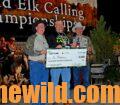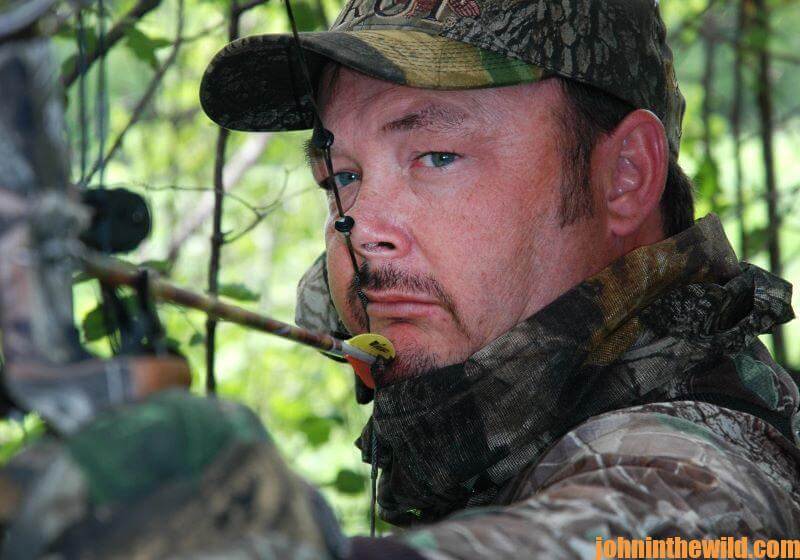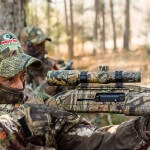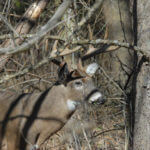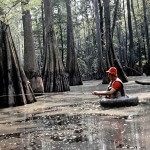Editor’s Note: Alex Rutledge of Birch Tree, Missouri, an accomplished turkey, deer, elk and predator caller, consistently takes big bucks and earns his living as a professional hunter. Rutledge has hunted throughout the United States, taping hunts for numerous videos and TV shows. Today, he’ll tell us about the bull elk he took in New Mexico for one of his videos.
 I was hunting with Vince Vigil of New Mexico Hunting Adventures (https://nmhuntingadventures.com/). Vince and I had become friends, and he invited me to hunt elk with him. On the first morning of the hunt, we heard several bulls, but the bulls wouldn’t show themselves. They stayed about 50 or 60 yards away. On the second morning of the hunt, we developed a different strategy. Instead of waiting to hear the bulls bugle, we decided to go to the top of the mountain and listen from above the bulls, rather than trying to reach the elk from below. When the bulls began to bugle, we started team calling, using three different cow calls to get the bulls’ attention, as well as an occasional bugle. We wanted to give the impression that we were a herd of elk that already had reached the top of the mountain.
I was hunting with Vince Vigil of New Mexico Hunting Adventures (https://nmhuntingadventures.com/). Vince and I had become friends, and he invited me to hunt elk with him. On the first morning of the hunt, we heard several bulls, but the bulls wouldn’t show themselves. They stayed about 50 or 60 yards away. On the second morning of the hunt, we developed a different strategy. Instead of waiting to hear the bulls bugle, we decided to go to the top of the mountain and listen from above the bulls, rather than trying to reach the elk from below. When the bulls began to bugle, we started team calling, using three different cow calls to get the bulls’ attention, as well as an occasional bugle. We wanted to give the impression that we were a herd of elk that already had reached the top of the mountain.
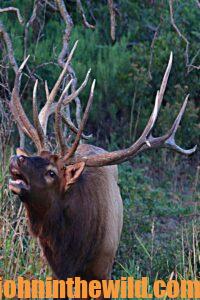
The bulls began to bugle back to us, but they bugled going away from us. They went about 1/2-mile away. So, we followed them, staying above them, and began to listen for them above a big canyon. The wind was coming from the left to the right. When we made one cow call with an estrus whine call, we heard a bull bugle. He bugled back and then started coming toward us. We made one more series of calls, and we could see the bull moving in our direction. The bull came in to within 45 yards of me, but then got nervous because he couldn’t see any cows and whirled to leave. So, I whispered to Vince, “Cow call. Cow call!” Vince began to cow call with an estrous cow call, and he stopped the bull in the same instant I drew my bow. I knew the bull was at 54 yards, so I aimed and released.
The arrow went through the bull’s shoulders, and since I’d taken his front legs out from under him, the bull dropped to the ground and never went any further. The bull scored 285 inches on Boone & Crockett (https://www.boone-crockett.org/), and he was a 6X6. This kill was the quickest I’d ever had with a bull elk on video. This bull also was the fifth bull I’d taken in 6 years. Here’s what I learned from this hunt:
- Using a range finder is important to my bowhunting success. I use a range finder to find all the distances I may have to shoot when an elk’s coming toward me. I’ll choose three-different structures – a bush, a tree, a limb or a big rock – that I can range within the distance I may have to shoot with each pin.
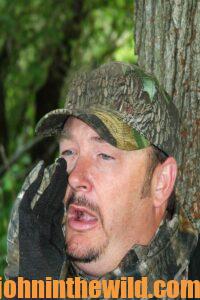
- Setting-up a mental scrimmage line like in football works well after I use my range finder to determine my distance from several objects. I know when a bull walks past or close to any one of those objects I’ve ranged for distance, I can make the shot. This way, I don’t have to depend on my range finder to give me the distance once I see the bull. I already know how close the bull has to come, and what distance he’s at when he passes by any of the distance markers I’ve set-up.
- Knowing I can make that 54-yard shot is important. I practice with my bow out to 60 yards. Once I get my bow sighted-in, every morning I like to get up and shoot. Now, if I can make that 50-yard shot every morning, a 20-yard shot will be a gimmee, and I know where I have to aim to deliver the arrow at 55 and 60 yards. To successfully make a 50 or 60 yard shot, have confidence that you can make the shot, stay calm, and don’t become overly excited when you have to make a shot at that distance with a bow. Also, you
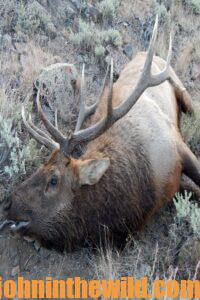 need the right conditions to make this type of shot. You’ve got to have a dead-calm, still day, so your arrows won’t drift because of the wind.
need the right conditions to make this type of shot. You’ve got to have a dead-calm, still day, so your arrows won’t drift because of the wind.
- Not overcalling an elk was something I relearned that contributed to my success. When we first tried to make contact with those elk from the top of the mountain, we did a lot of calling with several-different elk calls to try to paint a picture in that bull’s mind of an entire herd of elk on top of the mountain. However, when we called to this particular bull, and he answered and started coming to us, we stopped calling and let the bull come in to us. When the bull reached the spot where he expected to see a cow and didn’t and started to turn to leave, I encouraged Vince to cow call again to convince the bull there was a cow where he thought there should be one, he just couldn’t see her. That’s when I had the opportunity to take the shot.
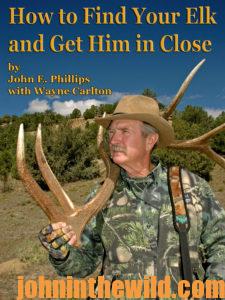 To learn more about elk hunting, check out John E. Phillips’ book, “How to Find Your Elk and Get Him in Close,” available in Kindle, print and Audible versions at http://amzn.to/17ENNqK. You may have to copy and paste this click into your browser. When you click on this book, notice on the left where Amazon allows you to read and hear 10% of the book for free. On the right side of the page and below the offer for a free Audible trial, you can click on Buy the Audible with one click.
To learn more about elk hunting, check out John E. Phillips’ book, “How to Find Your Elk and Get Him in Close,” available in Kindle, print and Audible versions at http://amzn.to/17ENNqK. You may have to copy and paste this click into your browser. When you click on this book, notice on the left where Amazon allows you to read and hear 10% of the book for free. On the right side of the page and below the offer for a free Audible trial, you can click on Buy the Audible with one click.
Tomorrow: Call Utah’s Bull Elk


